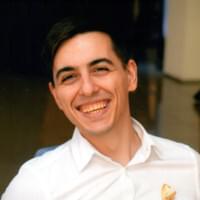It’s no news that keeping customers happy and satisfied is essential to a company’s long-term success. This makes the customer satisfaction score (CSAT) critically important. A customer satisfaction score is a key performance indicator that measures how satisfied customers are with a specific interaction or the overall experience with the company.
CSAT helps businesses estimate their customers’ satisfaction and also drives it. Around 77% of people have a more favorable view of brands that ask for and accept their feedback. Moreover, businesses can ultimately use this type of feedback to boost brand loyalty, improve the customer experience (CX), and increase profitability.
The only accurate way to gauge satisfaction is to ask the customers themselves. To that end, CSAT is calculated by a formula applied to data measured through simple customer feedback surveys containing 5- or 10-point Likert scales. These surveys usually look something like this:
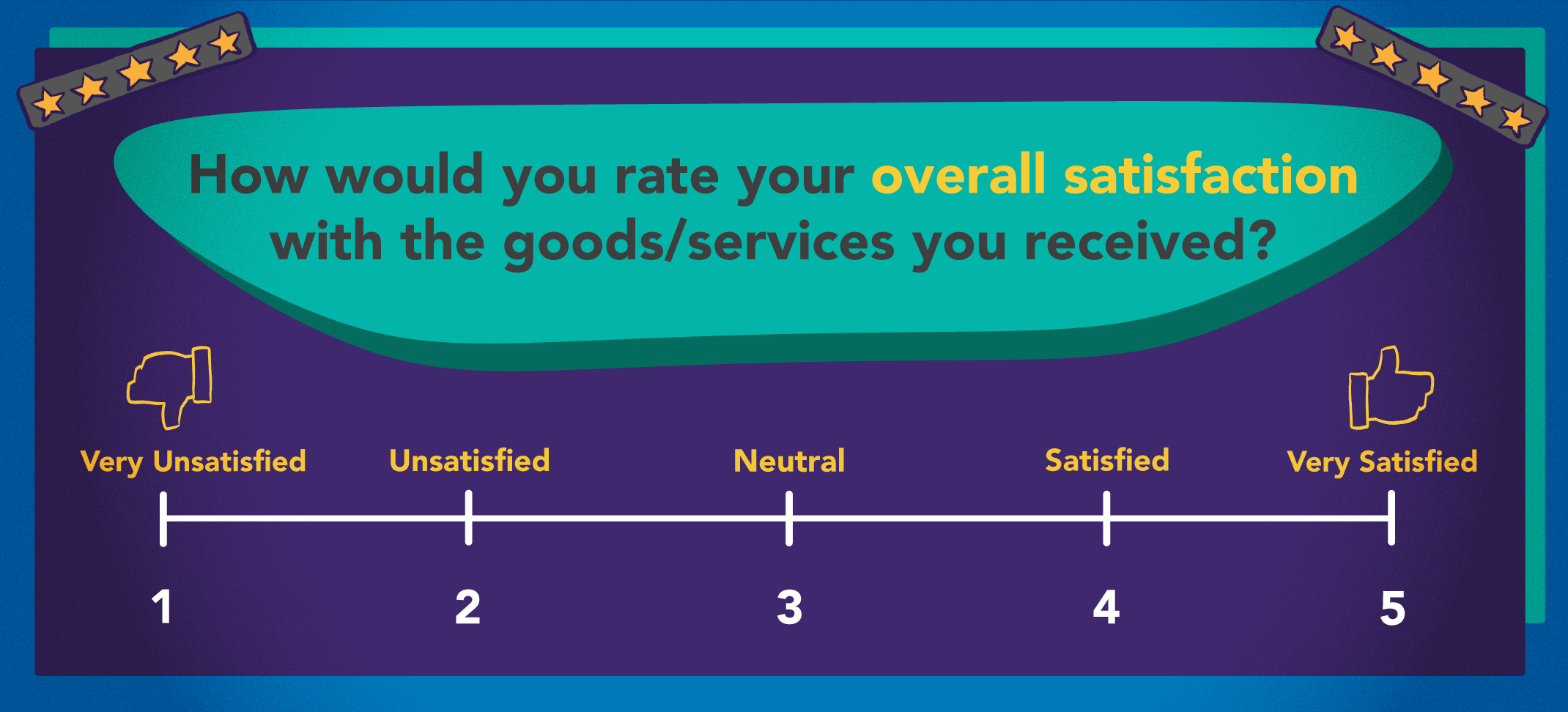
Table of Contents
- How to Calculate Customer Satisfaction Score
- CSAT Examples
- What Makes a Good CSAT Score?
- When to Measure Customer Satisfaction
- Advantages and Disadvantages of CSAT Scoring
- Using Your CSAT Score to Improve Customer Satisfaction
- CSAT Vs. Other Customer Satisfaction Metrics?
- Infographic
How to Calculate Customer Satisfaction Score
Companies calculate the customer satisfaction score, expressed as a percentage, where 0% represents complete dissatisfaction, and 100% is complete satisfaction.
Customers receive a survey asking them to rate their experience on a scale of 1 to 5 or 1 to 10. Each number represents a specific satisfaction level. These surveys are generally sent immediately after an interaction, either via chat, email, or as an in-app pop-up.
When calculating the CSAT score, only the number of top two responses in the survey, i.e., satisfied and very satisfied, are included as they are the best predictors of customer retention. Depending on the scale, that would be the number of responses for 4s and 5s or 9s and 10s. Collectively, they represent the number of satisfied customers.
The equation to calculate the CSAT score, which reflects the percentage of satisfied customers, is as follows:
(Number of Satisfied Customers / Number of Survey Responses) x 100
The outcome is the overall percentage of customers satisfied with your business.
As CSAT scores use structured data, every possible response has a number value; they’re relatively easy to calculate.
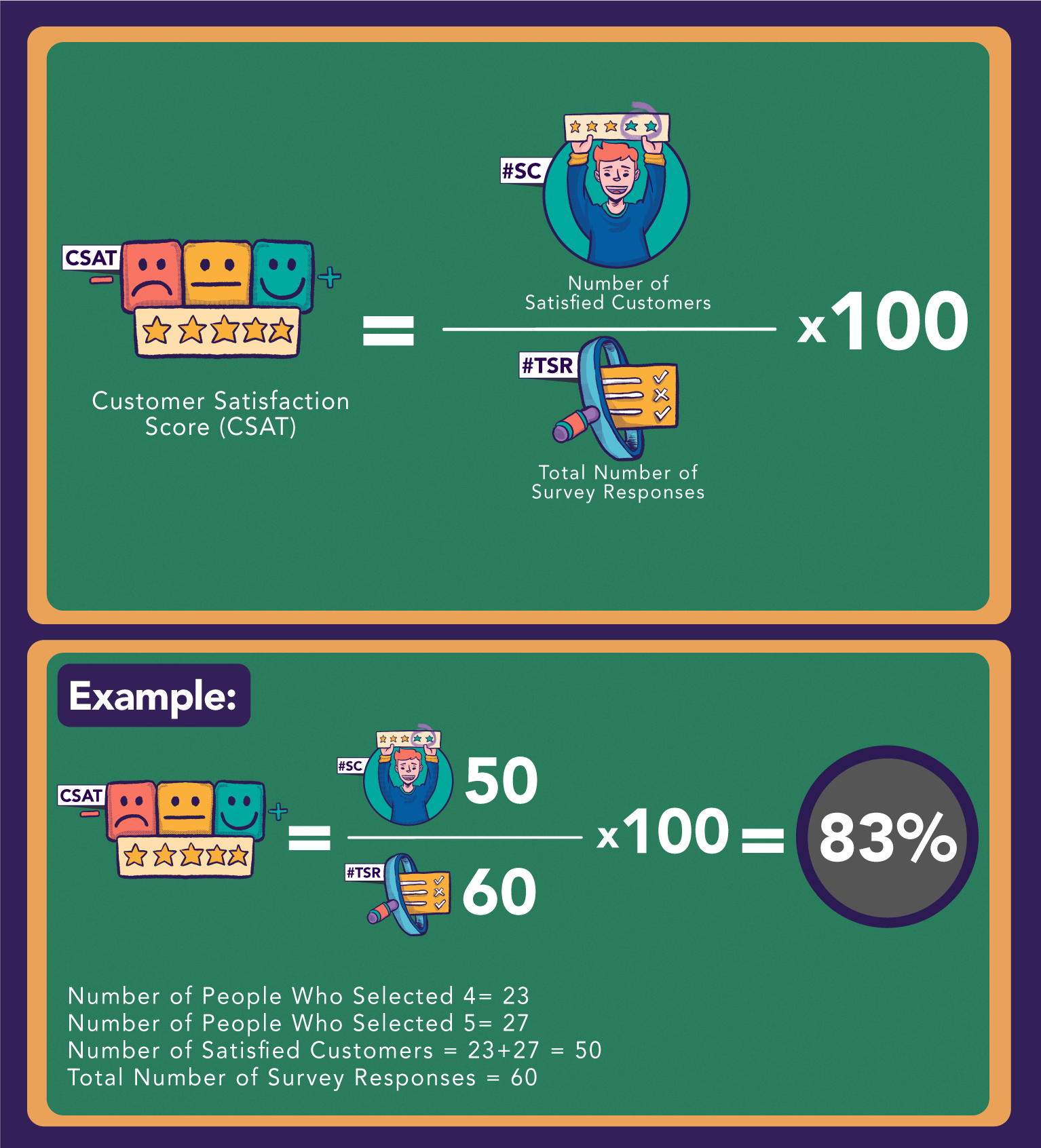
CSAT Examples
Let’s look at the formula in action.
Suppose Company X received 60 responses to their customer feedback surveys. Twenty-three people selected 4 (Satisfied), while 27 people selected 5 (Very Satisfied) on the survey. Hence the total number of satisfied customers adds up to 50. We would calculate their CSAT score in the following way:
CSAT = (50 / 60) x 100 = 83%
This is indubitably a good score, but it shows that there’s still room for improvement.
Below are a few examples of the different types of customer satisfaction surveys set up by actual companies:
American Express
American Express specializes in payment card services and caters to a diverse clientele. They use a short 2-question survey to gauge the satisfaction level of their customers after a few months of service. The survey motivates more customers to fill in the survey by briefly explaining the importance of completing the short survey.
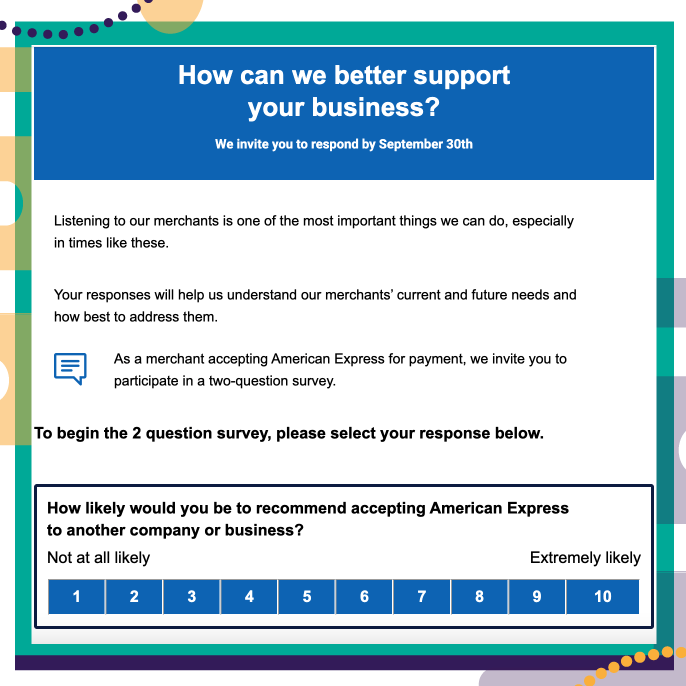
Amazon
Amazon makes it easy for its merchants to create post-chat surveys for measuring customer satisfaction scores as well as customer-facing agents’ performance. Here’s an example of a 5-point CSAT survey Amazon presents to its customers after each chat session.
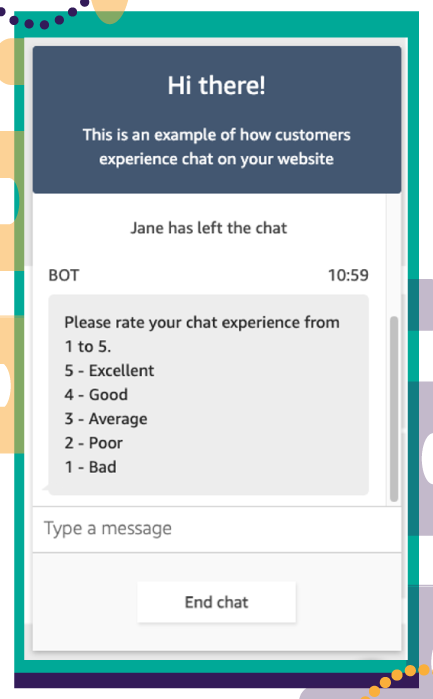
Domino’s
Domino’s pizza is one of the most-loved pizza chains in the US. They send a 10-point survey after each successful order to get an idea of how satisfied customers are with the product as well as the experience.
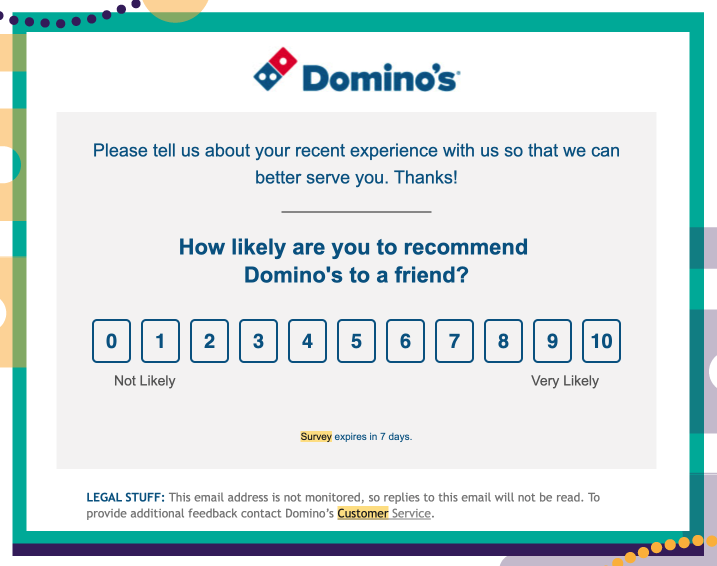
What Makes a Good CSAT Score?
The scale for satisfaction will look different for every industry and company. It generally refers to whether or not your customer service, brand, services, or products live up to customer expectations. Your customers will most likely be satisfied if you meet their expectations.
What makes a good CSAT score will depend very much on the industry. The American Customer Satisfaction Index is a national economic indicator measuring satisfaction in the US. You can find the customer satisfaction benchmark for your industry here.
Broadly speaking, a good CSAT score is between 75% and 85%, and if your sector isn’t in the list above, you can compare yourself to the average US customer satisfaction score, which is 74.4%.
Here are CSAT scores for a dozen different industries.

When to Measure Customer Satisfaction
Several times during the customer experience, it makes sense to measure customer satisfaction. Below are four of them:
1. Before They Renew Your Service
Six months before renewal is the perfect time to send a satisfaction survey. This timeframe gives your company enough time to fix a problem if there is dissatisfaction. If you conduct the survey too late, the company might not even be aware of any issues, and at that point, it will be too late to fix any problems.
Regardless, given how simple the surveys are, they can be quickly served to customers after each interaction on an ongoing basis. When organized in this way, there’s a constant feedback loop in place that lets businesses calculate and compare their customer satisfaction score over time.
2. After Education Interactions
It is essential to empower your customers with the information they need to get the most out of your products and services. Surveying customers after they’ve interacted with a knowledge base, FAQs or instructional videos will let you know about their effectiveness. CSAT can let you know if you’re falling short of your audience's expectations.
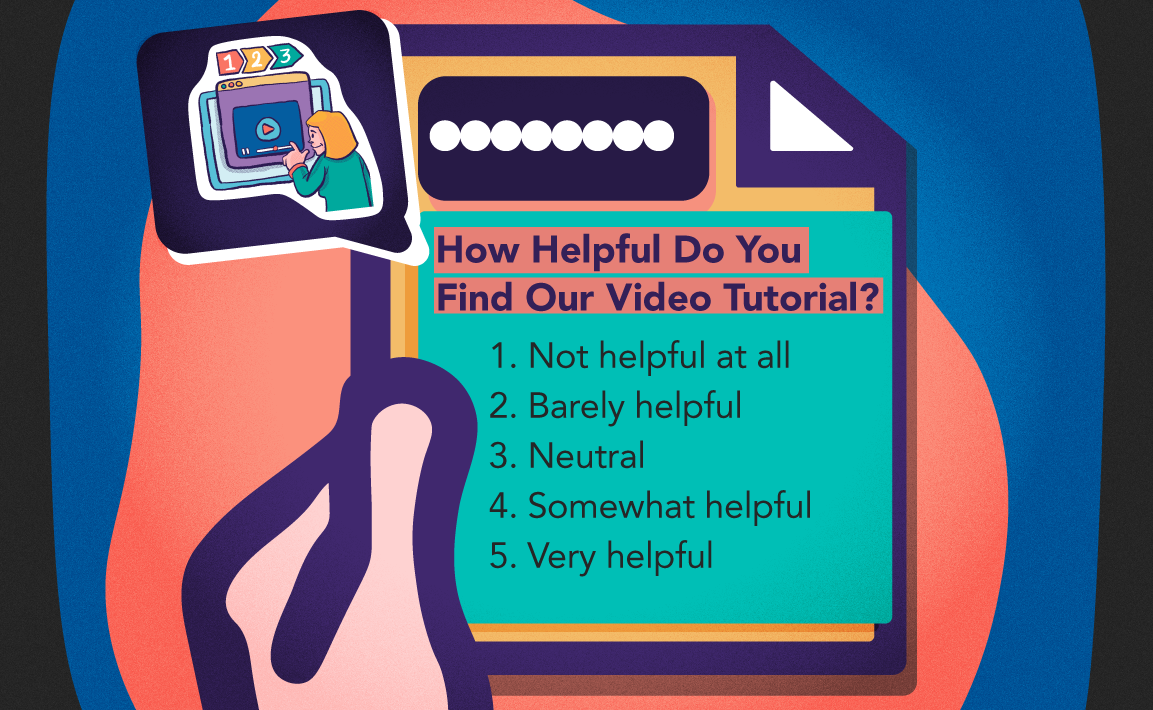
3. After Interactions with Customer Support
Asking customers how they feel about you directly after a customer support experience can provide valuable insight into how your team is doing. The results can let your customer support department judge their performance and takes steps for improvement.
4. After Customer Lifecycle Moments
Deploying CSAT surveys at critical moments during the customer life cycle will help you gauge their thinking and feeling. Measuring their satisfaction during critical moments, such as after onboarding or during the renewal period, will provide helpful feedback.

Advantages and Disadvantages of CSAT Scoring
No survey methodology is perfect, which is also true for the CSAT score. That being said, let’s take a closer look at the advantages and disadvantages of using this approach to understand satisfaction.
Advantages of CSAT Scoring
Being aware of your customers’ satisfaction can have many benefits. Let’s look at some of these advantages in detail.
- It Helps Understand Customer Perception Of Your Brand: The CSAT score shows how customers feel about your brand at a specific moment in time. The survey is delivered after a customer buys a product or service or interacts with the company. If their satisfaction is low, it’s easy to know what needs to be fixed.
- It Can Be Easily Customized: Surveys for CSAT can be adapted to fit the needs of any business. You can ask customers about a specific interaction, product, or service. You can also use these surveys to gauge the effectiveness of a company’s mobile app, marketing campaigns, website, etc.
- The Surveys are Short: Shorter surveys get more responses. The questionnaire for calculating CSAT is usually short and intuitive, making it more likely that the customers will take the few seconds required to complete it.
- The Scale is Adaptable: It can be changed depending on the context and audience preferences. Instead of numbers, you can use stars, verbal indicators (very unsatisfied, unsatisfied, neutral, etc.), or even emojis and international symbols.
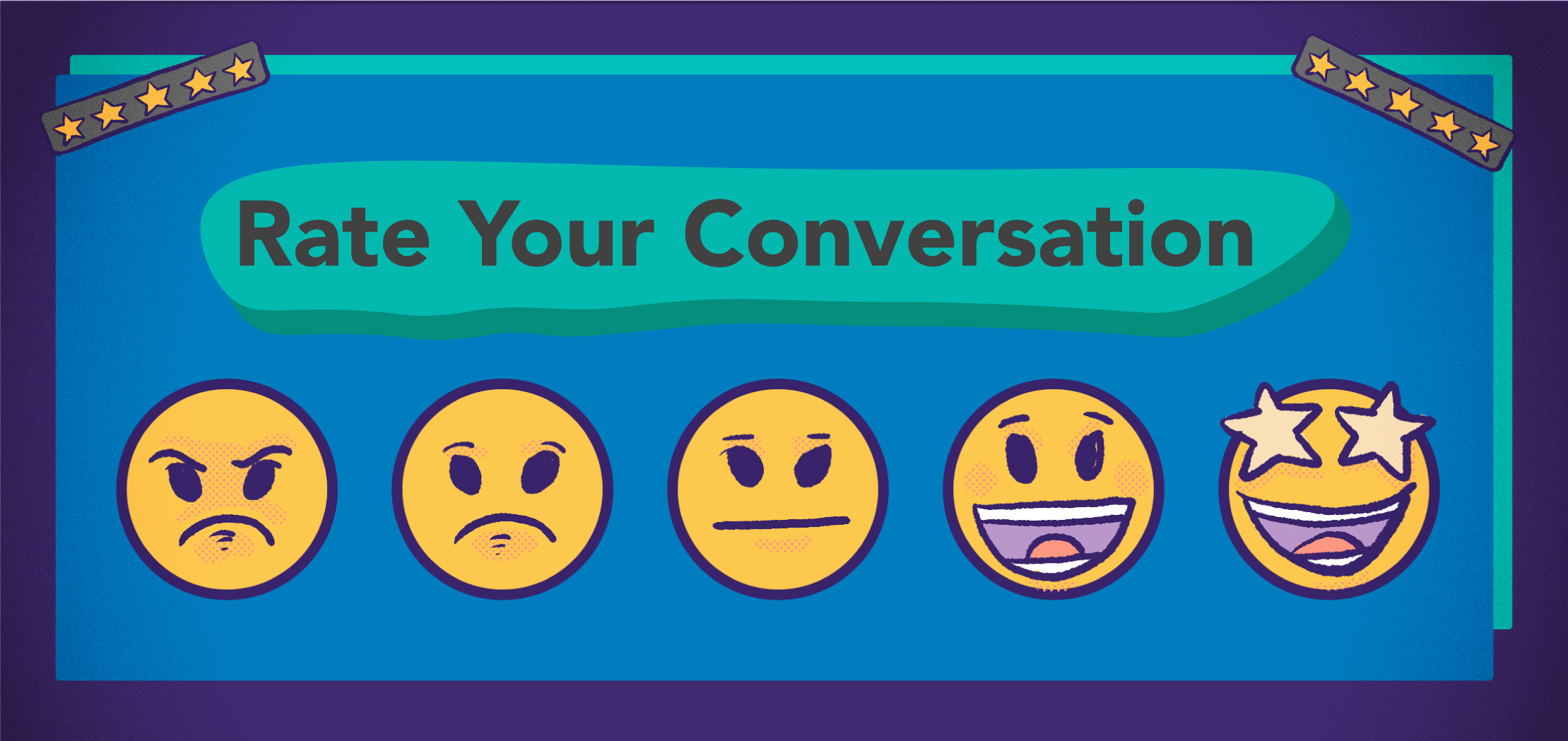
- They Provide Valuable and Varied Data: The customer satisfaction score can provide insight into many areas, from customer onboarding and website usability to the online checkout process and event or conference feedback.
- It Helps Reduce Churn: When done right, CSAT surveys can help companies reduce customer churn, which can be an expensive issue. Acting on the results of the surveys allows businesses to boost their revenue, improve their chances of success in the long term, increase customer loyalty, and enhance the CX.
- It Provides Actionable Data: Conducting CSAT surveys provides the decision-makers with actionable data that is both qualitative and quantitative. These scores are an excellent indicator of both loyalty and CX. Companies that pay close attention to it can leverage this information to enhance their reputation and boost retention rates.
- It Allows You to Stand Out: You can effectively differentiate yourself from the competition when you receive an excellent CSAT score and publish that information. If you go one step further and publish your first response times, you can use the score to gain new customers or strengthen your relationship with existing ones.
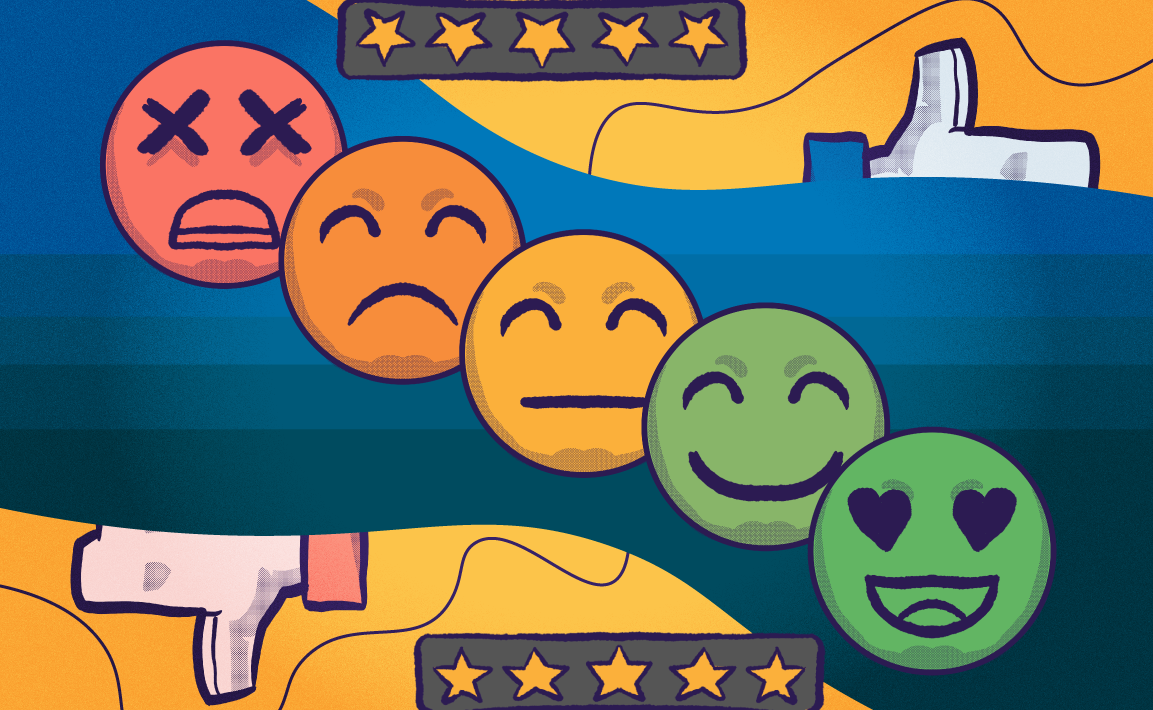
Disadvantages of CSAT Scoring
CSAT scoring is not an exact science. While it provides valuable information to the company, it also has some shortcomings.
- It Doesn’t Reflect a Longstanding Opinion: As customers’ responses are based on a single interaction or their feelings after a specific event, the score reflects a short-term sentiment.
- It Is Subjective: Satisfaction means different things to different people. Customers may say they are satisfied, but that doesn’t necessarily indicate what you did to earn their satisfaction.
- Sentiment Varies by Industry: Although there are CSAT benchmarks for different industries, it’s still hard to determine what’s considered a good or bad score.
- Satisfaction is Not a Goal: Optimizing for satisfaction is not necessarily the main goal for most companies. Most will aim to improve retention and lifetime value, as satisfaction is abstract.
- They’re Very Simple: CSAT surveys are simple and lack both detail and depth. As a result, it’s hard to say how loyal or disloyal customers are according to their responses. Also, given the nature of the question, people will respond with their reaction to that specific experience, which may not reflect their overall perception of the brand and CX.
Given the pros and cons of using CSAT surveys, it’s generally a good idea to supplement them with more information to get a holistic view of customer sentiment and loyalty.

Using Your CSAT Score to Improve Customer Satisfaction
Once the customer satisfaction data is collected, it’s time to roll up your sleeves and take action. Whether your CSAT score is high or low, you can always do something to improve this key performance indicator.
The first step should be to analyze the data. The information gathered must be used to make tangible improvements in your company’s customer experience. Given the inferences, develop a plan of action with complete steps and create a team to be in charge of execution.
Although CSAT scores are relatively simple, they continue to be one of the leading metrics companies currently use to measure CX improvement. Below are some of the common metrics used by organizations for measuring digital CX improvement–usage compared between 2020 and 2021.
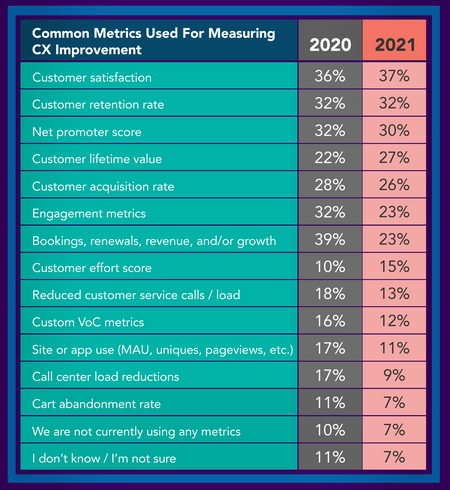
Once the plan has been implemented, customer satisfaction must be measured frequently to understand the effect of the changes. Periodic CSAT scores will give you an idea of whether you’re making progress or if additional tweaks and adjustments must be made.
As companies continue to evolve and customers’ expectations and desires change, which impacts customer satisfaction. Businesses need to continue to monitor their CSAT scores over time to maintain their satisfaction scores and adjust their plans or pivot if needed.
The CSAT score can give you valuable insight into many areas, such as communication, professionalism, responsiveness, resolution time and effectiveness, and employee knowledge and expertise. Understanding exactly how people feel about your company concerning all of these areas can allow you to improve them individually for a better CX overall.
Here are a few specific strategies for improving customer satisfaction:
Communicate Goals
Make sure everyone is on the same page by clearly communicating your objectives. Let everyone know which processes you’ll be measuring and how you plan on measuring them.
Improve Hold Time
Nobody likes to wait on hold. Improving hold time is extremely important for raising your CSAT. In fact, data shows that waiting on hold for more than three minutes can plummet customer satisfaction scores. Customers value those companies that resolve their issues immediately and don’t keep them waiting.
Automate Where It Matters
CSAT scores can be improved through automation, wherever it makes sense for your business. This can include automatic call routing to the right agents or AI and chatbots to respond quickly to customers.
Provide Omni-Channel Support
Providing a seamless experience across multiple channels, such as email, chat, and social media, boosts satisfaction. It also allows customers to engage with your brand however they prefer. According to research by Aberdeen, brands that use omnichannel support can see an 89% increase in customer satisfaction and retention.
Personalize Your Marketing
Use all the customer data you have to personalize the experience. Announce individualized offers on their special days and product recommendations that hit the mark every time. Segment your email lists and personalize email subject lines. Making your customers feel special boosts satisfaction.
Review Performance Periodically
It’s important to continually review the performance of the customer service department to ensure that it is meeting your customers’ expectations every single time.
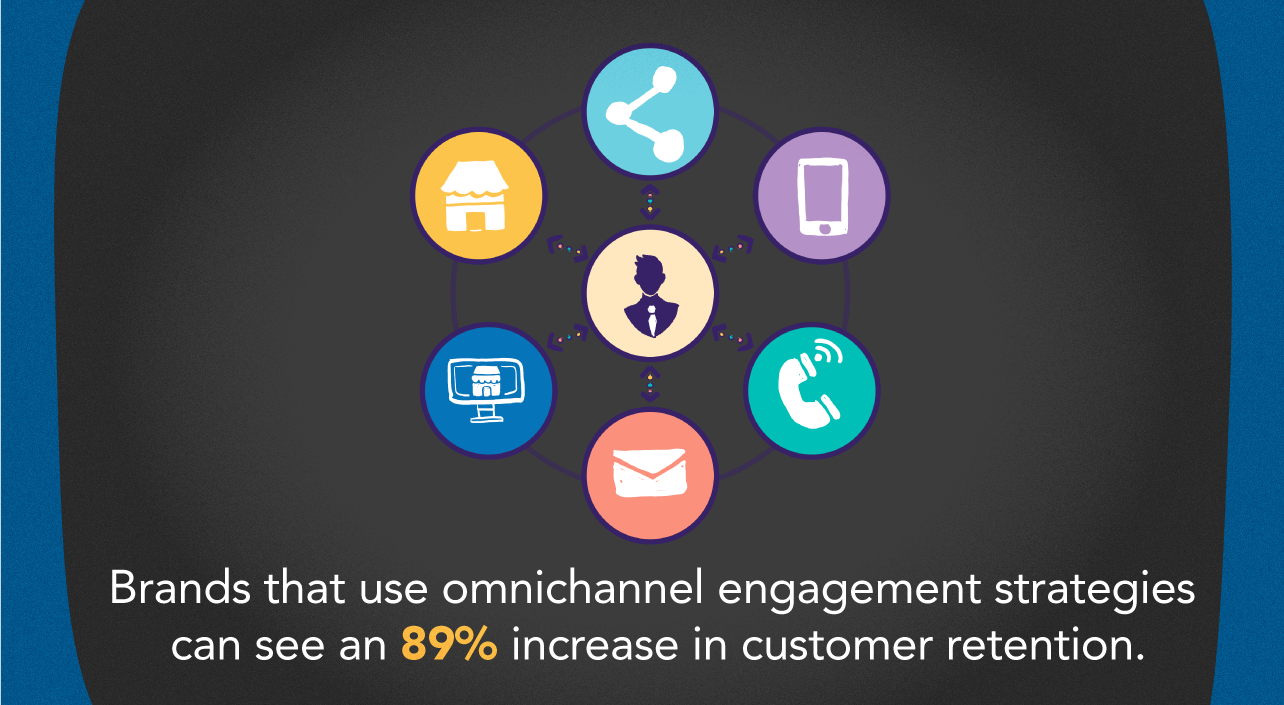
CSAT Vs. Other Customer Satisfaction Metrics?
The CSAT is a significant KPI in its own might and shouldn’t be confused with other customer satisfaction metrics, like the Net Promoter Score (NPS) and the Customer Effort Score (CES).
Net Promoter Score (NPS)
While the CSAT measures satisfaction, the NPS measures loyalty. It’s important because having satisfied customers doesn’t guarantee that they are also loyal to your brand or the product. Analyzing NPS along with CSAT can give you a deeper insight into how your customers relate to your offerings.
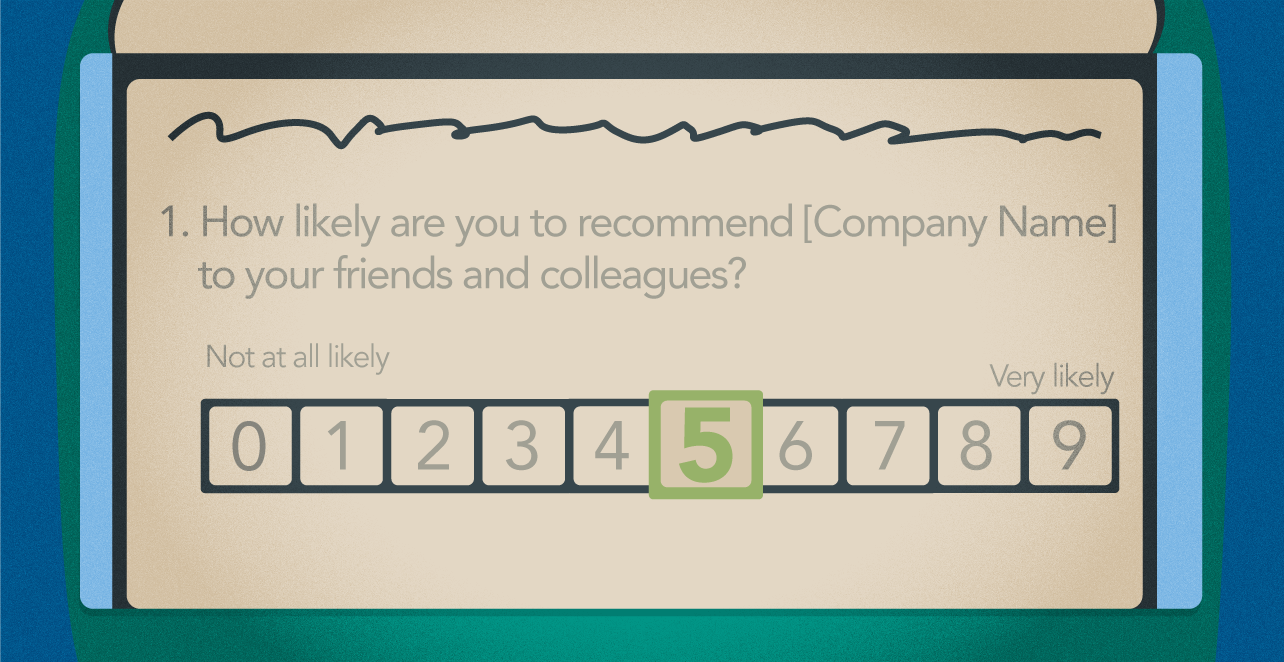
Customer Effort Score (CES)
The CES measures the effort customers have to put in to purchase your products or fix a problem through customer support. It’s important because the more efficient and quick you are to help people resolve their issues, the better the CX. This directly impacts customer satisfaction, and a high CES is believed to predict customer loyalty. Using this metric together with the CSAT can help you better understand how loyal your satisfied customers are.
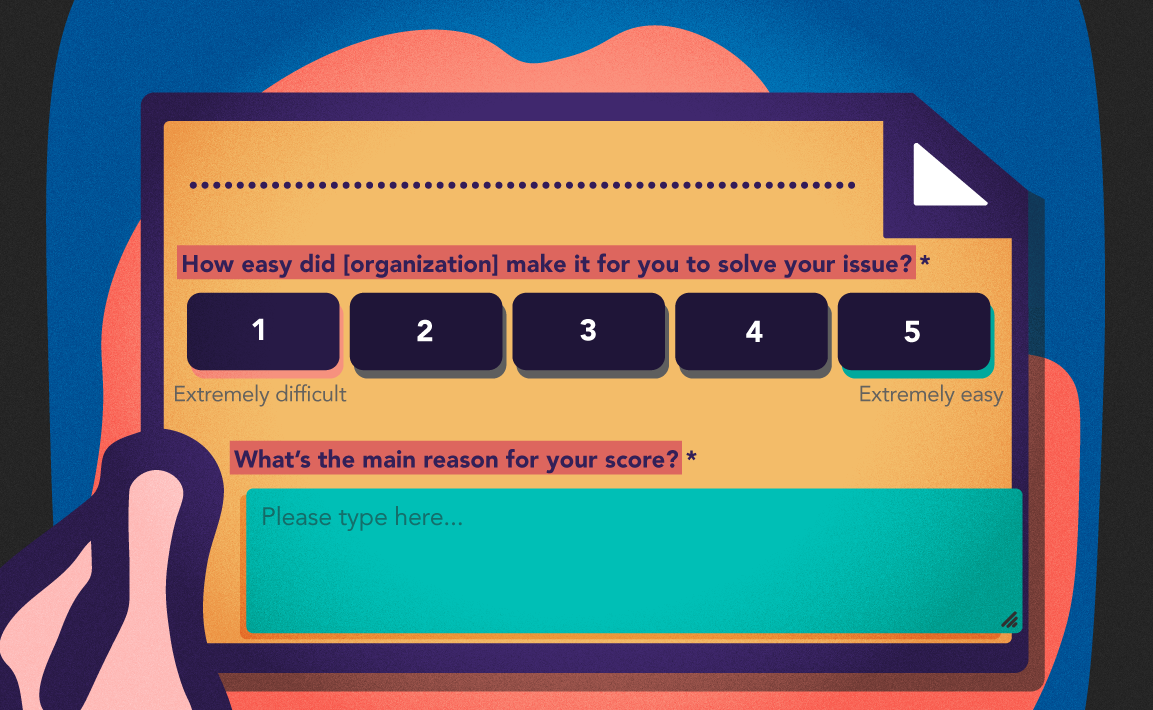
Companies should really consider all three metrics together to effectively gauge the CX.
Measuring customer service regularly is a significant first step to understanding how your customers feel and how you can keep them happy and satisfied. Companies that regularly send customer satisfaction surveys can identify pain points, highlight problems, assess their relationships with customers, and identify new features and solutions on time.
CSAT alone won’t do anything for your business; what you do with the data really counts. Other metrics like NPS and CES should be used, together with CSAT to improve key business areas, particularly wherever you fall short of customer expectations.
Infographic

